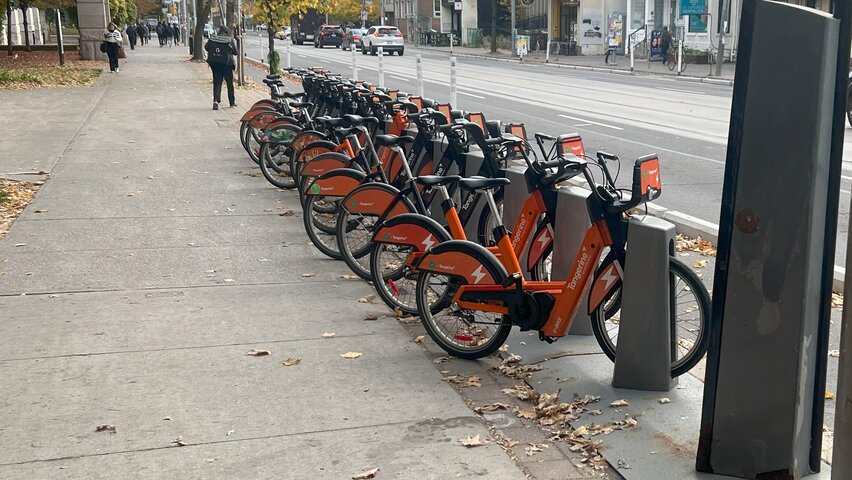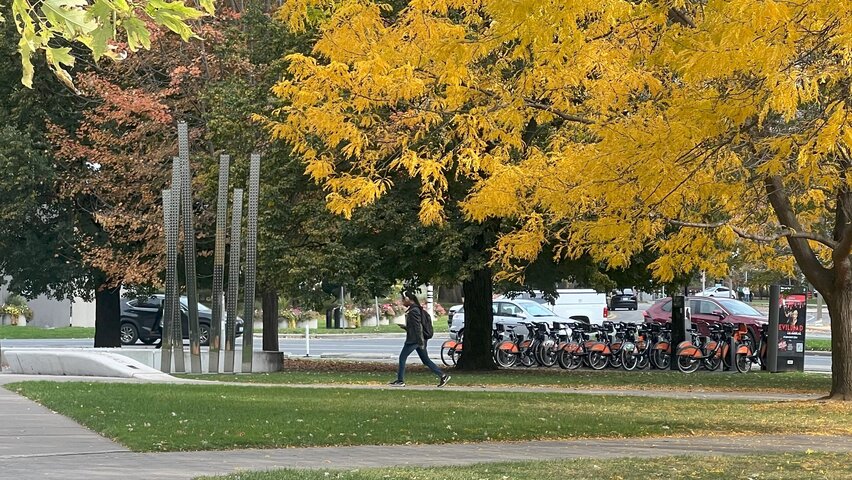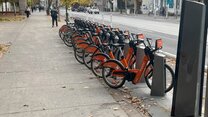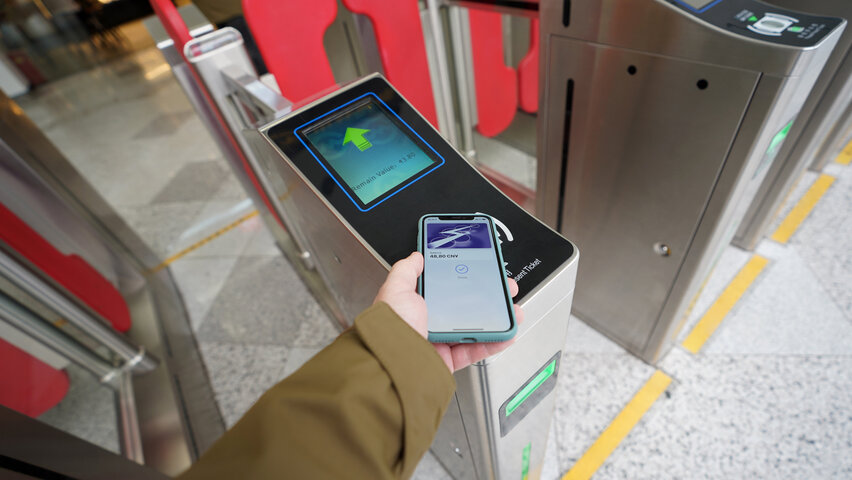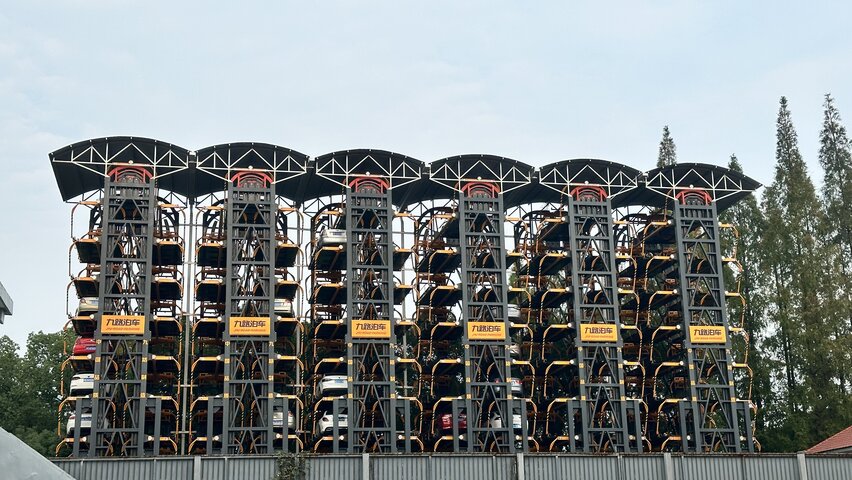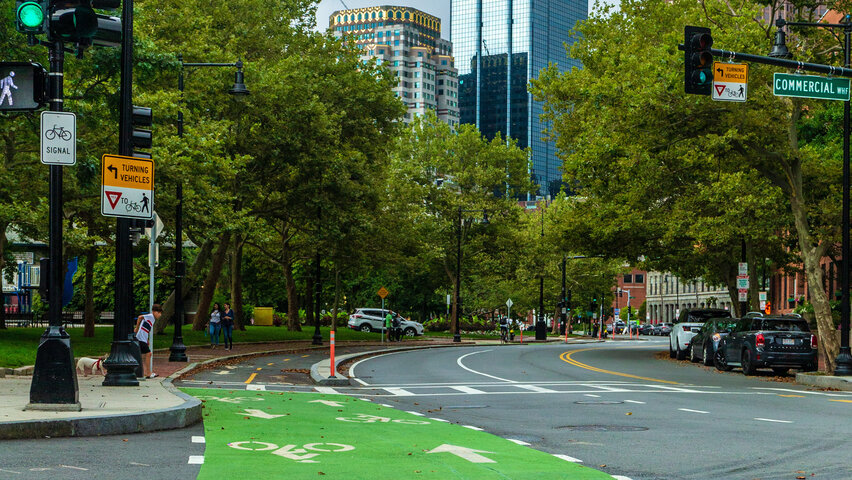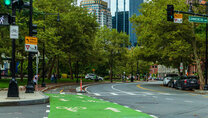"In the second episode, our three talents share their experiences of getting around in Boston, Shanghai, and Toronto. During their stays, they dive into the mobility landscapes of their host countries and cities, which hold some surprises. What is considered the mobility of the future in Germany is already a reality in some places. Want to learn more about the 'Mobility Wow Moments' of the three, or how they navigate from A to B in Boston, Shanghai, or Toronto? Then just keep reading."

ICM-Talents Exploring the Realms of International Mobility
The ICM Talents are travelling around the world as part of the Future Mobility Grants to further advance their scientific projects. They are also finding out how people in and around Boston, Shanghai and Toronto get around. Today they tell you what particularly fascinates or surprises the three researchers.
Eugen Ernst-University of Toronto, Kanada
"The extensive mobility options in Toronto make it easy for me to get from one place to another. Similar to Germany, there are streetcars, subways, and trains, along with a well-developed bike-sharing system. Toronto's infrastructure for cyclists is excellent, and the coverage and accessibility of bike-sharing stations are very good. Despite the heavy traffic in the downtown area, getting from A to B is straightforward. However, e-scooters are nowhere to be found here, which contributes to less chaos on the streets and sidewalks.
Another difference is the ease of payment: I can conveniently buy tickets using my credit card or Apple Pay. I simply hold my card or smartphone against an NFC scanner and can then board. A culture shock in terms of mobility, however, is the unreliability of the streetcars operated by the Toronto Transit Commission (TTC). If you want to use the streetcar here, you should plan for generous time buffers. In some cases, I had to wait over 30 minutes, even though the streetcar was supposed to arrive every ten minutes—while multiple streetcars were running in the opposite direction one after the other. After this experience, my appreciation for the punctuality of trains in Germany has certainly grown."
Name/Institute: Eugen Ernst - Institute of Industrial Automation and Software Engineering (IAS), University of Stuttgart
Research topic: Tracking and shape estimation of objects for driver assistance systems and robotic grasping.
Institute Kanada: Toronto Intelligent Systems Lab (Vector Institute for Artificial Intelligence), University of Toronto - Kanada
Annika Bastian-Shanghai Jiao Tong University, China
"In Shanghai, everything is successfully managed with an app! Renting bikes? Alipay. Booking flights? Alipay. Taking high-speed trains, subways, or buses? Alipay. Paying for taxis? Alipay. What’s fascinating is that with one click, I can access all mobility systems elsewhere. As soon as I arrive in a new city, Alipay notifies me that I can switch to the new network. Most people have probably heard of WeChat, but not everyone may know that Alipay is also an absolute must for mobility in China. China’s metropolises have long outgrown the analog age. I’m always out and about here without keys, as there’s nothing that can’t be unlocked with my phone or my face."
Name/Institute: Annika Bastian - Institut of Product Engineering (IPEK), KIT
Research topic: Development of a support system to strengthen positive and overcome negative influences of cultural differences on creative problem-solving in geographically distributed product development teams.
Institute China: School of Mechanical Engineering, Shanghai Jiao Tong University - China
Marvin May-Massachusetts Institute of Technology, USA
"In the USA, there’s really only one four-wheeled mode of transportation: the car. It feels like there are as many cars as there are people here. When there are no parking spaces available in residential areas, neighbors sometimes park their cars on empty lots—sometimes even against construction fences, depending on the day. Every square foot is utilized here; the metric system isn’t really a thing in Boston. However, the transformation of mobility in Boston has progressed further than in other US metropolises and is at least on a European level. The city is redesigning major roads to be more bike- and pedestrian-friendly, and establishing dedicated bike lanes—though whether cyclists actually stop at crosswalks is another story. Apparently, many Americans can’t ride a bike, which might not be so surprising. Buses are also required to have bike racks on many routes.
Thanks to the 'T,' Boston’s subway, everything is well-connected, affordable, and fast. However, from an international perspective, the T is very inconsistent. While you can conveniently pay for your trips with a credit card or NFC on your phone—just tap and hop on the subway or bus—the infrastructure and vehicles seem to be stuck in the last century. The spirit of innovation does lead to interesting combinations, like the Silver Line. It’s a kind of bus-subway, where buses travel in tunnels with underground stations but merge back into regular traffic outside the city center. The concept isn’t bad, but it seems to fall short of fulfilling all expectations.
Typically, I only see people walking on the MIT campus in Cambridge or right in downtown Boston. The general rule of thumb is: if the walking distance is longer than driving, taking the subway, or the bus, Americans won’t walk—except for jogging. Well, with winter slowly approaching, you’re also glad not to be outside for too long in the cold."
Name/Institute: Dr. Marvin May - wbk Institute of Production Science, KIT
Research topic: Al4NAPP - Artificial intelligence for sustainable aggregated production planning
Institute USA: Department of Mechanical Engineering, Massachusetts Institute of Technology (MIT) - USA
Future Mobility Grants - Talents on the road
Want to know more about our Talents? In the coming weeks, they will talk about the new worlds of mobility and the universities they discover during their stays abroad. You can find out more about the ICM Future Mobility Grants on our homepage.


